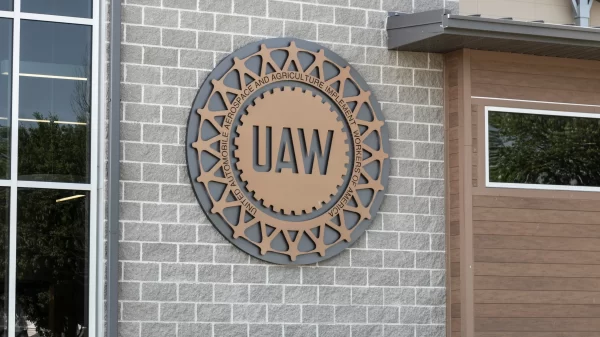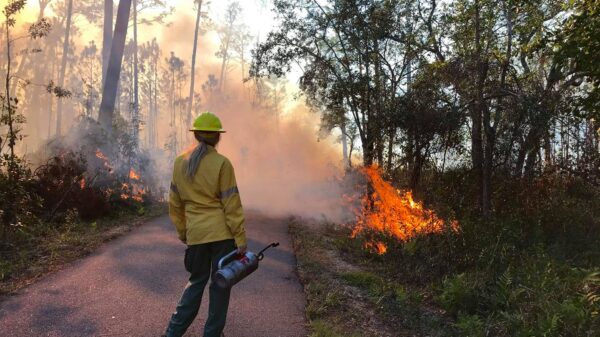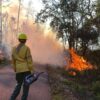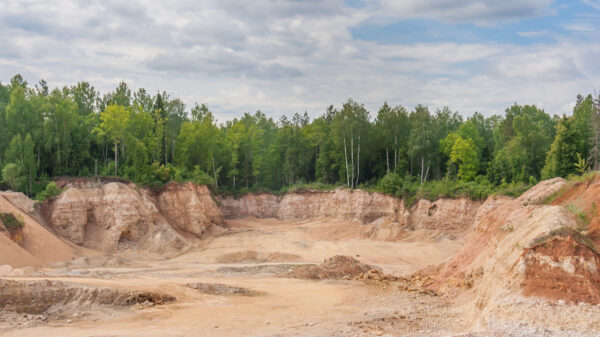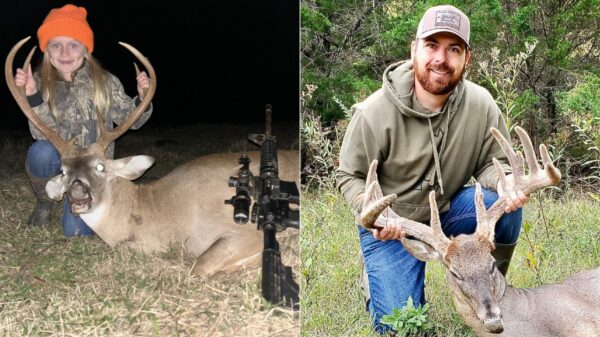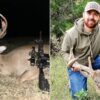By Brandon Moseley
Alabama Political Reporter
Chronic Wasting Disease is continuing to spread across the country with Mississippi being the latest state to test positive for the disease that has killed thousands of deer across the country and spread to 25 states and two Canadian provinces.
The Alabama Department of Conservation and Natural Resources has regulations against importing deer, elk, mule deer, moose, or other cervid meat from state infected with CWD unless it is completely deboned. The regulations are designed to prevent the spread of CWD to Alabama, but to be effective everyone must participate.
“We don’t want people to panic, but we want people to be cognizant and understand that this is a major issue. It can be prevented, but it’s going to take everybody participating,” said WFF Director Chuck Sykes.
CWD is a transmissible disease found to affect deer and other cervids. It is believed to be caused by an infectious prion and has an extended incubation period.
Diagnosis requires examination of brain and lymphatic tissue. Infected deer become emaciated, behave erratically and eventually die.
“Mad cow disease” (bovine spongiform encephalopathy) is the best known of the prion diseases, which did enormous damage to the agricultural economy in Great Britain and resulted in government orders to destroy 4.5 million cattle.
A link between eating the brain and spinal column of cattle infected with mad cow disease (BSE) and the human prion disease called variant Creutzfeldt-Jakob disease has been strongly suggested. BSE and CWD are possibly related to scrapie, which is another transmissible spongiform encephalopathy (TSE) found in sheep and goats. All of the know TSEs are fatal, but have long incubation periods.
“We’ve been warning about this for years, that this was not something that was fabricated, and we needed to do everything in our power to keep it out of Alabama,” said WFF Director Chuck Sykes. “Now it’s hit home. It’s real close now. What it means is we, as an agency, can only do so much. We can set regulations. It’s up to the hunters to fulfill those regulations. That’s why we’ve made a big media push to get the word out.
It is illegal now to import whole carcasses of dead cervids into Alabama. Any member of the cervid family harvested in those CWD-positive areas must be properly prepared before it can be legally brought into Alabama. Parts that may be legally imported include completely deboned meat, cleaned skull plates with attached antlers with no visible brain or spinal cord tissue present, upper canine teeth with no root structure or other soft tissue present and finished taxidermy products or tanned hides.
Diagnosis of CWD requires examination of brain and lymphatic tissue. Infected deer become emaciated, behave erratically and eventually die.
Sykes said, “People have got to start reporting what they see if they see someone doing something wrong,” he said. “We’ve only got so many officers in the field. We cannot be everywhere. We’ve already got preventative measures. We’ve got the carcass importation regulation. We’ve got the live deer importation ban. We’ve got testing we’re doing. We’re doing everything we can to stay on top of it, but we know there are still people illegally bringing live deer into the state. We know there are people illegally bringing carcasses into the state. That’s because they’re selfish, and they’re only worried about what’s inconvenient for them and not what impact it could have on our economy or our way of life.”
Alabama Department of Agriculture and Industries Commissioner John McMillan and ADCNR Commissioner Chris Blankenship announced that new testing equipment has been purchased by the ADCNR’s Wildlife and Freshwater Fisheries Division for the State Veterinary Diagnostic Laboratory. The equipment, known as Enzyme Linked Immunosorbent Assay (ELISA), will be dedicated to testing samples for CWD. Agriculture and Industries will employ a technician to conduct the tests.
“We have been working alongside ADCNR for quite some time to update our lab equipment to give us this testing capability,” said Commissioner McMillan. “A recent case of CWD in a free-range, white-tailed deer in west Mississippi prompted us to make this announcement now.”
The testing equipment is undergoing a validation process required by the United States Department of Agriculture’s (USDA) National Veterinary Services Laboratory. Once complete, the laboratory will be able to test deer samples and quickly determine the presence of CWD.
“We have had an active CWD surveillance program since 2002 in partnership with the ADCNR and game breeder facilities,” State Veterinarian Dr. Tony Frazier said. “This testing capability will be an additional safeguard in protecting the deer population in the state.”
There is no scientific evidence of any transmission of CWD to domestic livestock or humans; but much of Alabama’s rural economy depends on hunting and the revenue generated by the sport which has a $1.6 billion a year economic impact to the state. While Alabama is also rich in turkey, quail, doves, geese, rabbits, squirrels, feral hogs and other game species, deer hunting is by far the biggest economic driver of the hunting economy.
Chris Cook, Deer Project Program Leader for the WFF, said that in states with confirmed cases, a containment zone, usually a 5-mile radius, is established. The deer density is then established and a specific number of samples is taken for testing. If more positives are confirmed, the containment zone is expanded until officials can determine the distribution of the disease.
“Then you move forward with management actions to contain the disease,” Cook said. “You encourage people to harvest deer to keep the population down, not to eradicate it. That’s been shown not to work. You just try to limit the spread of the disease inside the containment zone.”
Cook has been in touch with the Mississippi Wildlife, Fisheries and Parks officials to get information on the positive CWD deer.
“It was on a hunting club,” Cook said. “They had seen the deer for three days. One of the hunters was on a food plot. He watched the deer come in, and it was staggering around. It fell down and died while the hunter was there. They contacted the wildlife department, and unfortunately it tested positive. And this was the county where they had taken the most samples from doing CWD surveillance. It certainly caught them by surprise. It just shows you everybody needs to remain vigilant to report dead and dying deer so we can get samples to find out why that deer was in that condition. And we need the public to remain vigilant.”
“Mississippi has implemented its CWD response plan, which is exactly what needs to be done,” said University of Georgia School of Veterinary Medicine professor John Fischer, who heads the Southeastern Cooperative Wildlife Disease Study. “It’s unlikely there will ever be a smoking gun indicating how the disease got there. It just needs to be dealt with. And the response needs to be adaptable as more information becomes available.”
Fischer said that the prion (an abnormal protein) that causes the disease is virtually impossible to eliminate. “That’s one of the big confounders of management. The prion can persist in the environment and remain infectious for we don’t know how long. Even if you were able to remove every susceptible animal out there and hold the ground open, we don’t know how long you would have to wait to repopulate the area. I don’t think anybody knows.”
“All you can do is do the best you can to prevent the introduction of the disease into the state,” Dr. Fischer said. “Early detection is going to give you a better success of managing the disease. In areas where the disease appears endemic, the primary goal is to slow down geographic spread. Eradication doesn’t appear reasonable at this stage.”
According to researchers at The University of Texas Health Science Center at Houston (UTHealth), grass plants can bind, uptake and transport infectious prions, which are much smaller than bacteria. Prions are single proteins that cannot be destroyed by typical “kill strategies” such as extreme heat or ultraviolet light.
“With prions, nothing like that works,” said Claudio Soto, Ph.D., a UTHealth researcher and lead author of an article about the topic published May 26, 2015, in Cell Reports.
Prions are protein-based infectious agents that cause the characteristic spongy degeneration of the brain, leading to emaciation, abnormal behavior, loss of bodily functions, and death.
Soto’s team analyzed the retention of CWD and other infectious prion proteins and their infectivity in wheat grass roots and leaves that had been incubated with prion-contaminated material. They discovered that even highly diluted amounts of the material can bind to the roots and leaves. From there, they fed the wheat grass to hamsters, which became infected with the disease. The team also found the infectious prion proteins in plants that had been exposed to urine and feces from prion-infected hamsters and deer. The team found that plants can uptake prions from contaminated soil and transport them to different parts of the plant. By doing this, the plants can act as a carrier of CWD. Dr. Soto has suggested that plants may play an important role in environmental prion contamination and the horizontal transmission of the disease. (Horizontal transmission occurs when an infectious agent is transmitted between members of the same species.) Scientists already knew that these CWD prions are good at binding to soil, especially clay-based soils, and that they can persist there. Soto said that when some of the soil where an infected dead animal had been buried was injected into research animals several years after it had been buried, the injected animals came down with prion disease.
Soto warns that there is a good possibility that prions have been progressively accumulating in the environment.
In 1985 the Colorado Division of Wildlife tried to eliminate CWD from a research facility by treating the soil with chlorine, removing the treated soil, and applying an additional chlorine treatment before letting the facility remain vacant for more than a year, they were unsuccessful in eliminating CWD from the facility.
“It underscores the nasty nature of this disease and the challenge it is to manage it on a natural landscape,” said Matt Dunfee, coordinator of the Chronic Wasting Disease Alliance. “It’s hard to contain, especially when it spreads through the soil or on plants. We haven’t been able to eliminate it on a natural landscape known to be infected.”
There has never been a deer to human transmission of a prion disease; but the CDC (Centers for Disease Control and Prevention) caution hunters to avoid eating meat from deer that appear to be infected and to wash hands and utensils thoroughly after processing a deer carcass.
Cook warned everyone to be vigilant, “f they see a carcass that looks suspicious or a live animal being transported, contact one of our district offices or call the 24-hour hotline (Operation GameWatch 1-800-272-4263).”
(Original reporting by the Food Safety News’s Phil McCausland and Outdoors Alabama’s David Ranier as well as consultation with Medicenet, and Wikipedia contributed to this report)




















